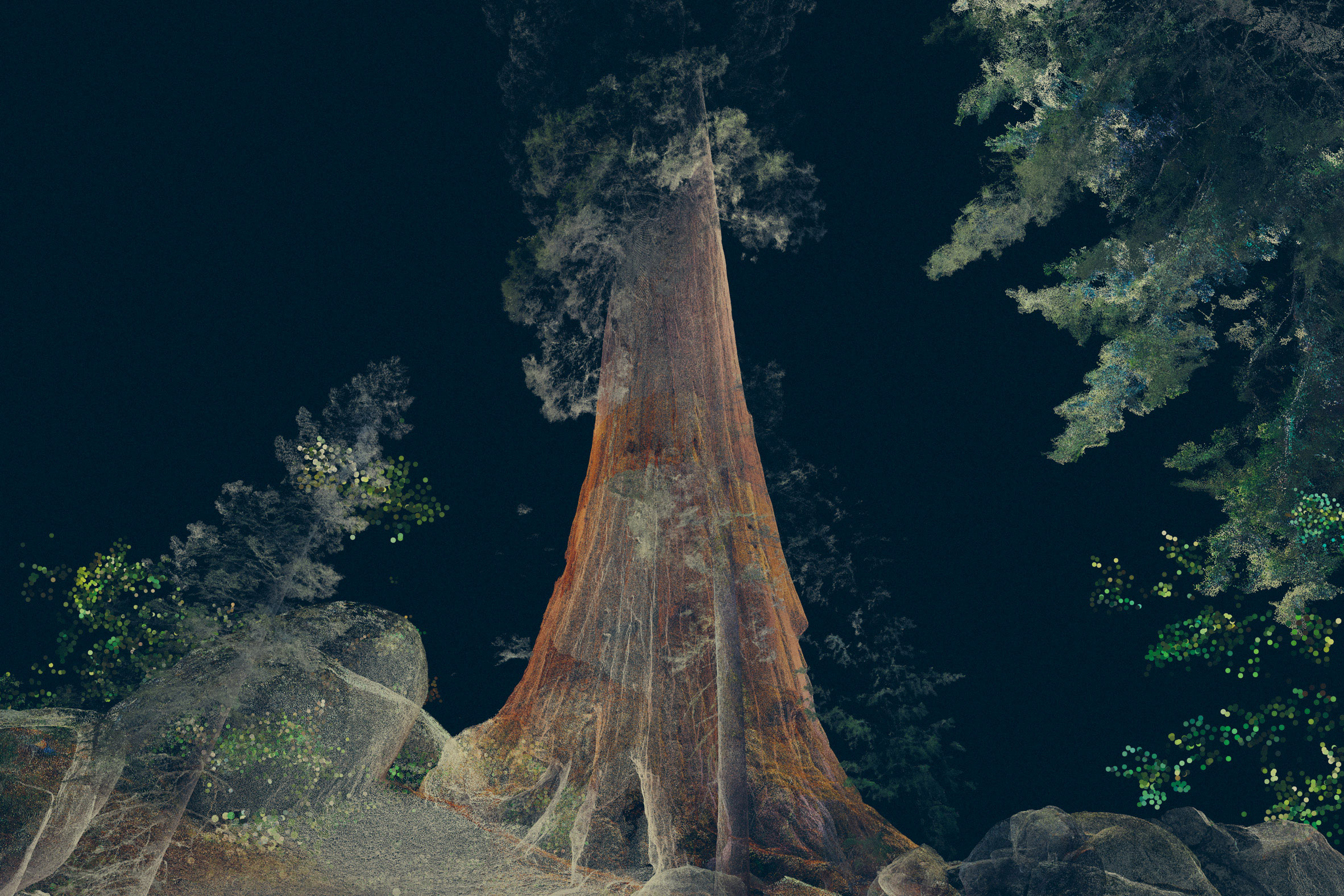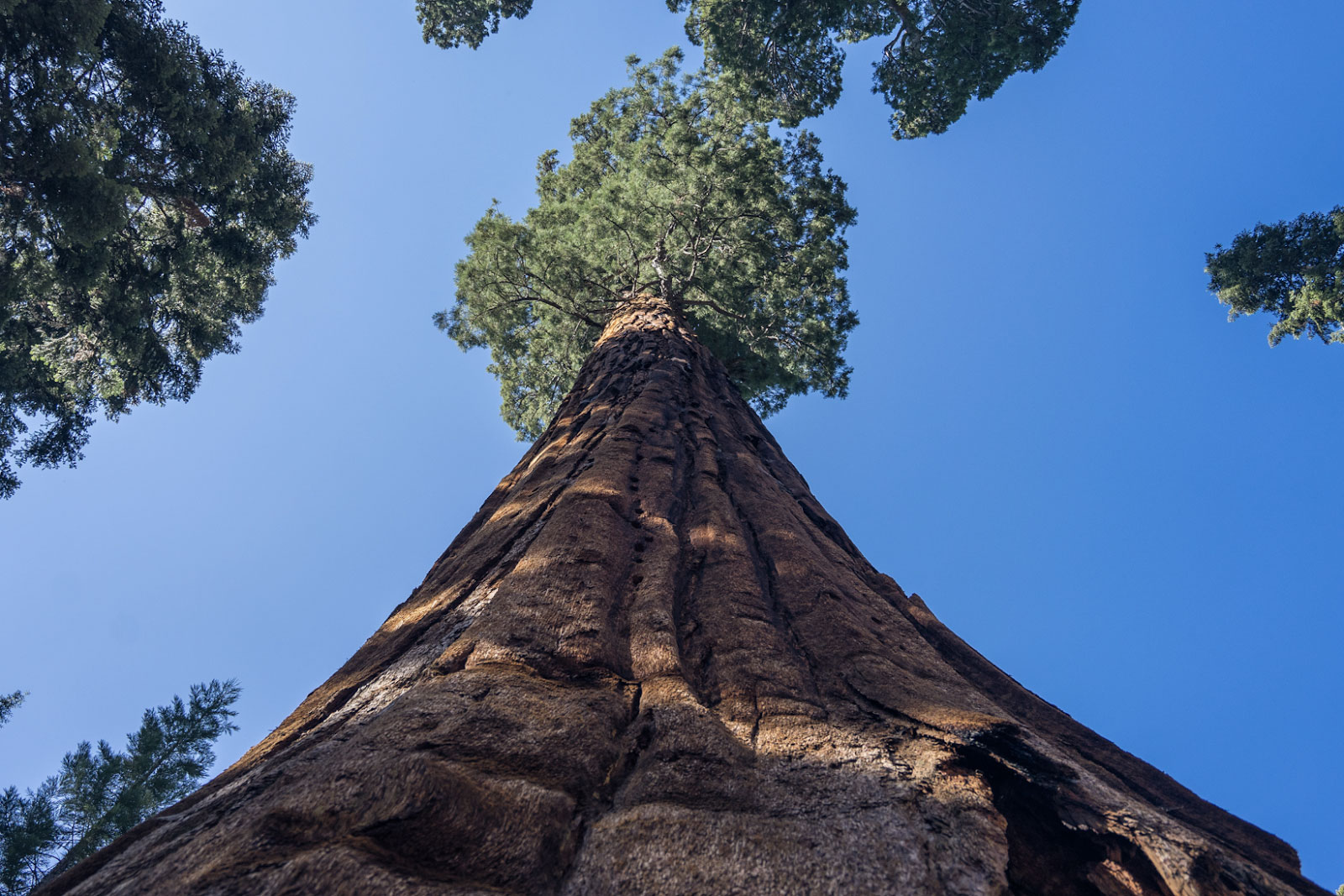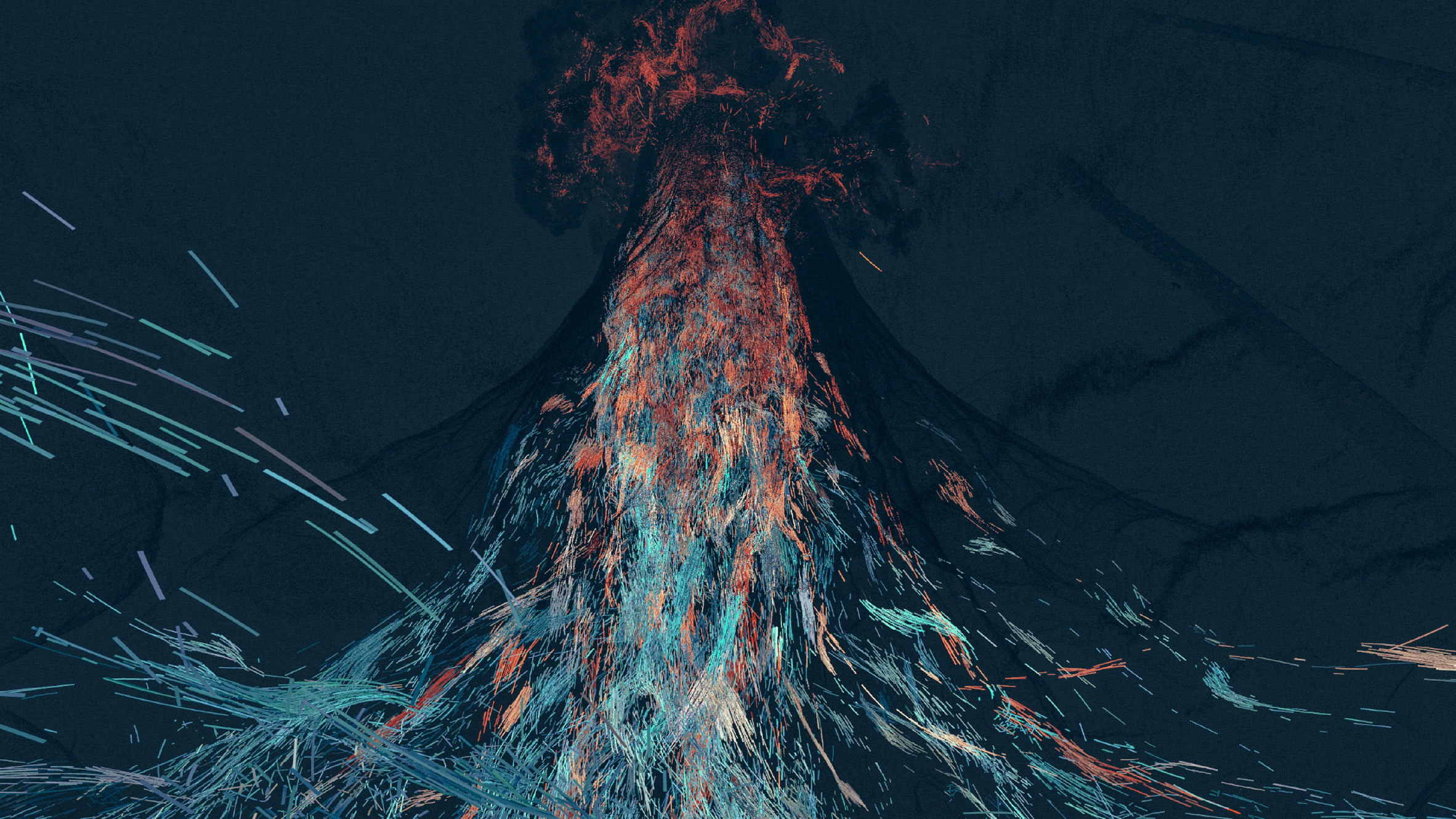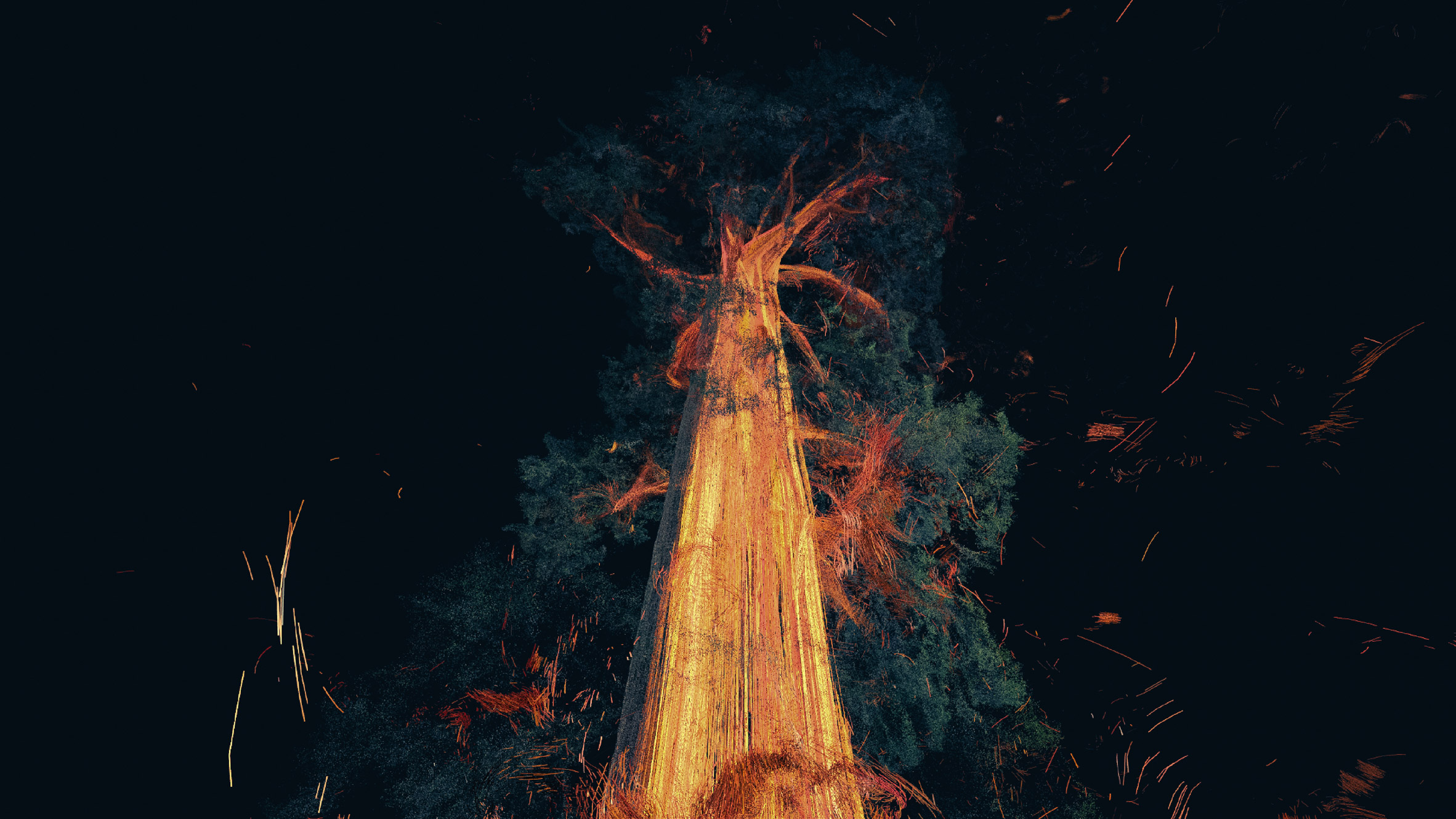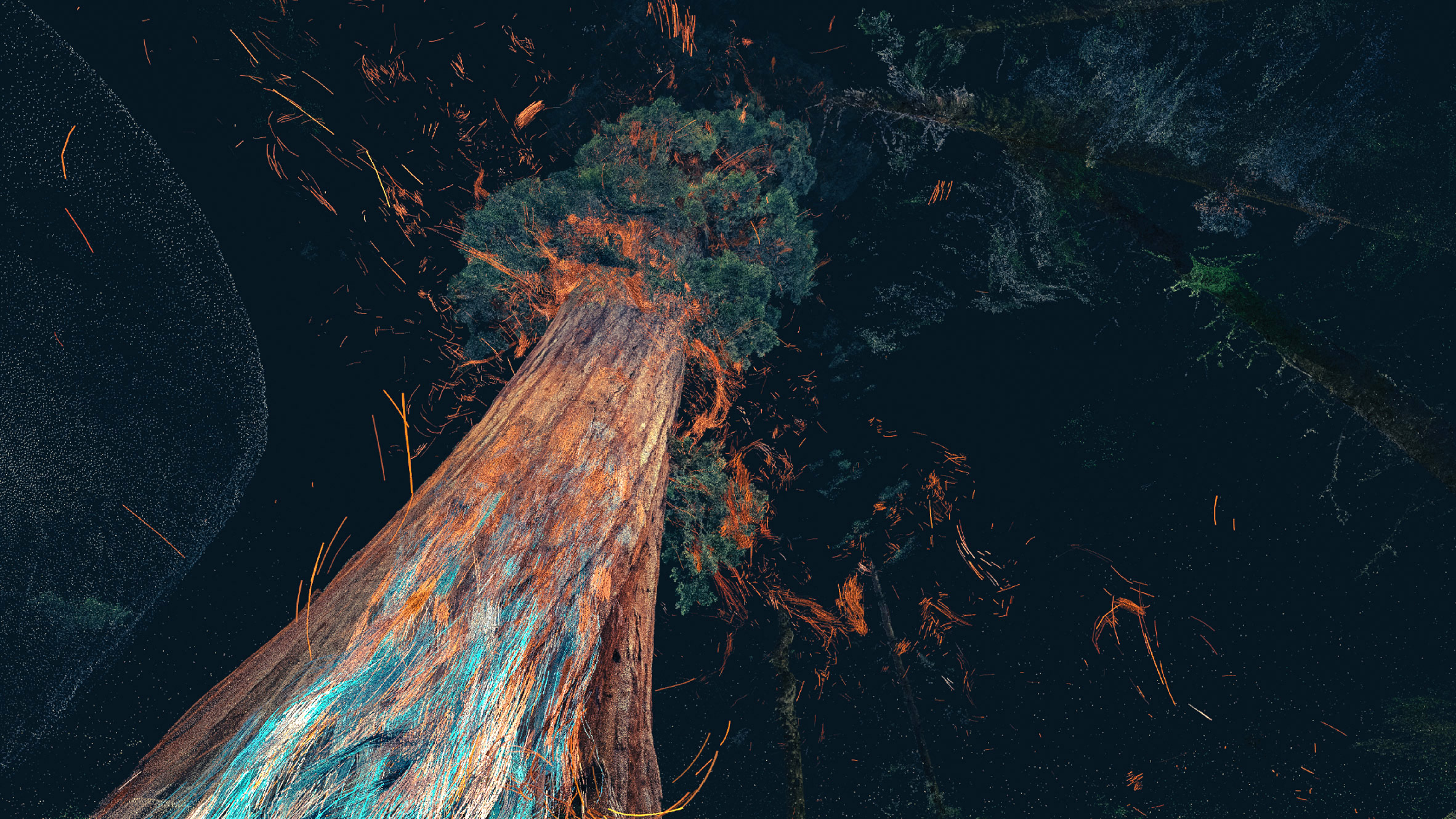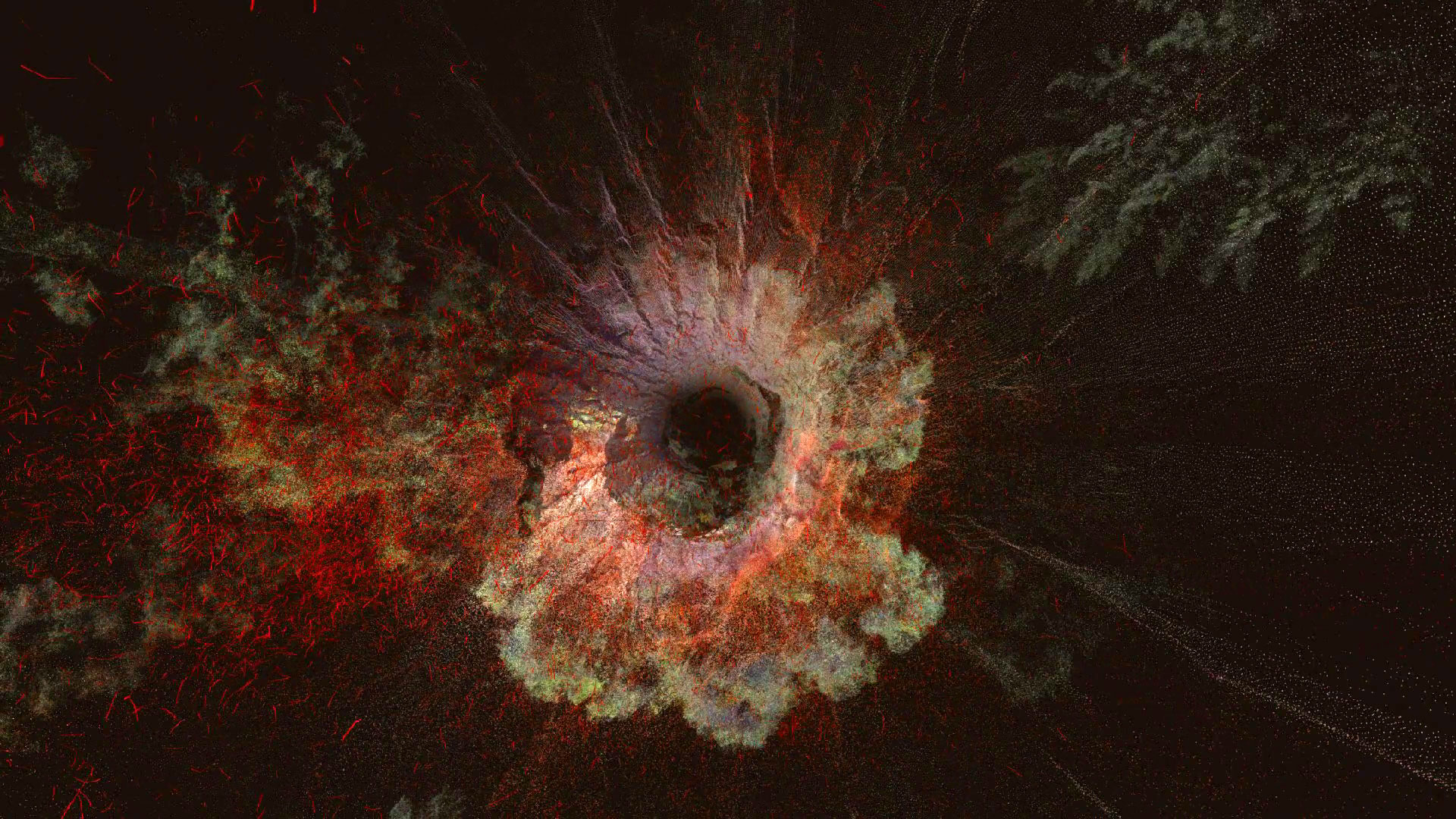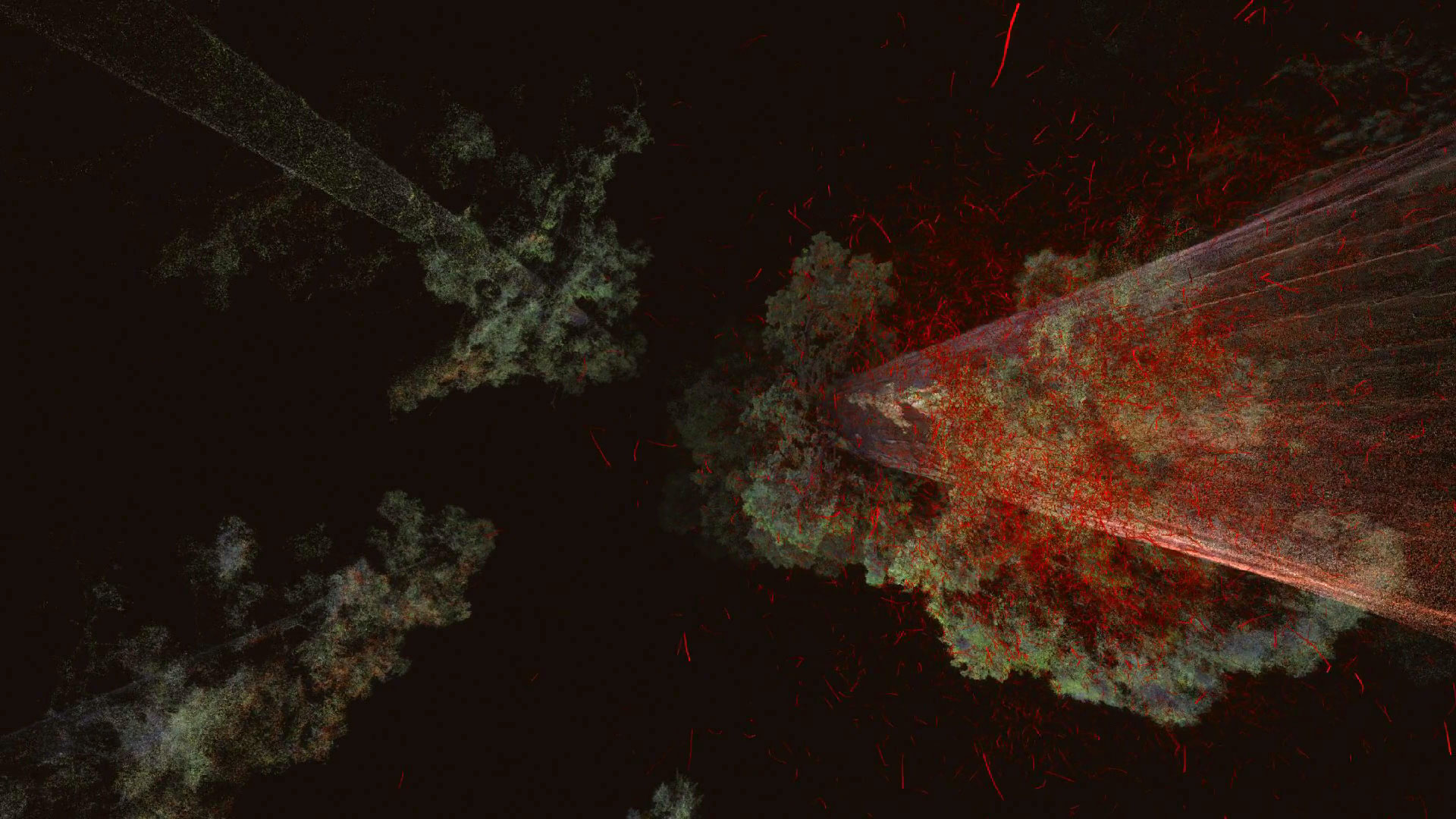Treehugger makes visible the powerful inner systems of a sequoia tree by visualizing the circulation of water from its deep roots, through its gigantic trunk, to its leaves. Viewers are immersed in a hypnotic flow of water and energy, while their perception of time is altered, in relation to the temporality of a 3000-year-old sequoia tree.
Invited by Fabbula to present it for the first time in France, Treehugger wins the hearts and minds of the VR Arles Festival 2018 jury.
Fabbula: I have just hugged a tree for 20 minutes and felt like flowing from root to high up in the tree among billions of colorful particles. What happened to me exactly?
Barnaby Steel: As it is at the moment, Treehugger is an experience that takes you on the journey of water. You are inside world’s largest tree, a realistic looking giant Sequoia and it starts to rain. You can look underneath the ground and see the roots suckling up all water. Then you go up the tree as those particles of water flow up, all the way to the top of the tree.
You can choose to be inside the tree near the heartbeat of the tree and the blue change color in reaction to the chemical of the tree mylene into red. You can be also outside the tree you hear the rain falling. As you journey up this giant tree you get up to where the pine needles are, they billions pine needles these giant sequoia. There you experience a photosynthesis as the climax of the experience and we start to see the tree breathing. In a way the process of photosynthesis is the basis of life on earth so it deserves a hero moment!
There is this overarching thing to what we do, it’s showing the world beyond your senses and changing your perceptions of reality and when you come back your are transformed. We think that having a deep understanding on how things work and why they are the way they are lets you appreciate things on a different level. Part of this field of exploration is working with scientists, accessing PHD level knowledge that we can turn into something that is observable, experientiable.
“Showing the world beyond your senses and changing your perceptions of reality.”
For Treehugger, we explored contemporary ideas like quantum biology and how everything is interconnected especially with Mycellia. That’s the amazing thing with VR, it is about turning that into an experience in the same way human start to learn by observing, moving around sniffing and touching. It’s one of these project that’s not like a one off. It’s going to be something we keep drooling upon. What we really want to do with this is to turn it into an open world. Imagine a forest in which you could fly yet able to explore every details. You could have many different experiences and feel how everything is so interconnected. The ambition ultimately is to go the amazon and work on trees that are endangered. The project can act as a digital fossils and also having a connection to a place that disappearing might push people to take action to make change.
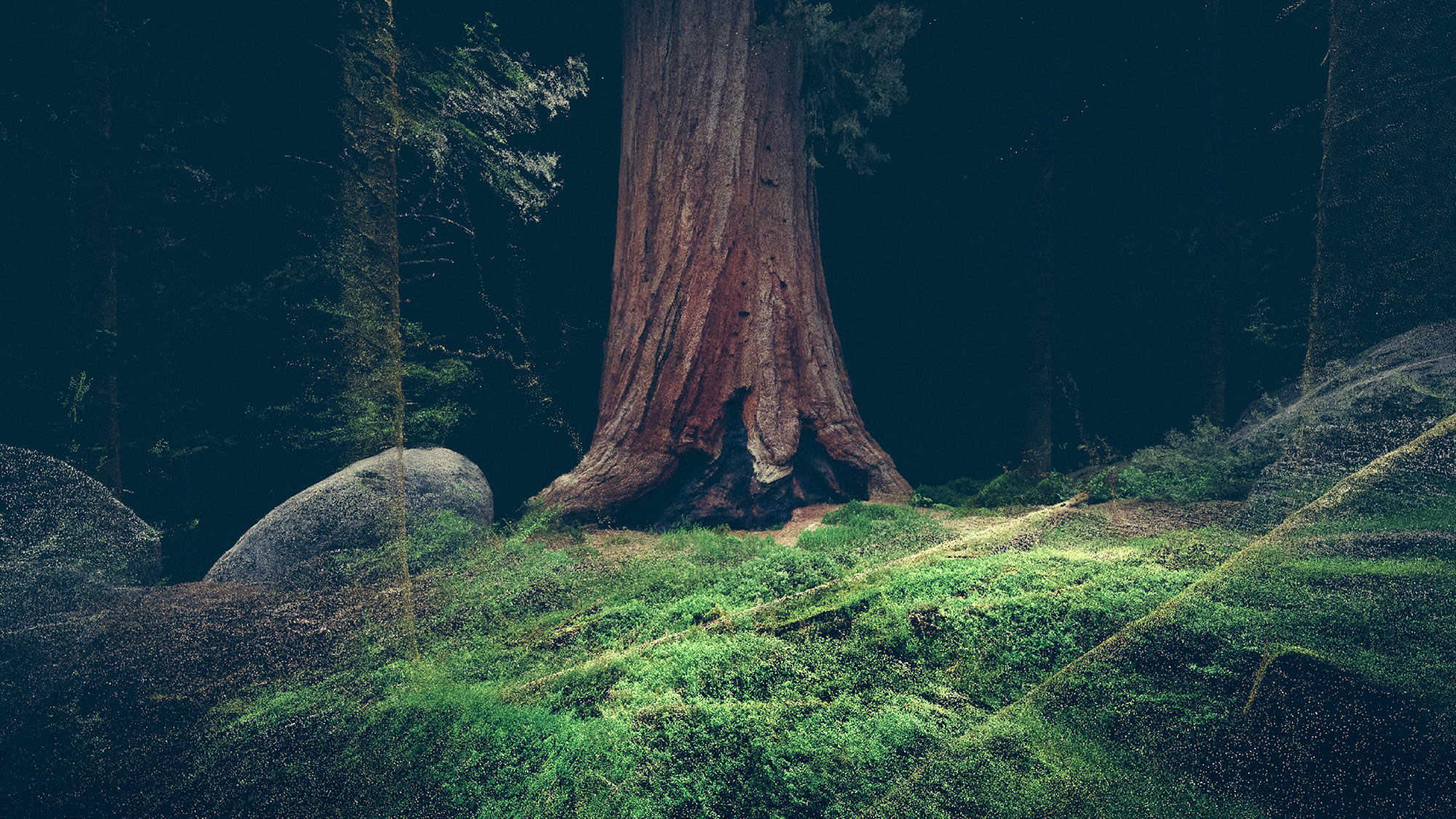
Barnaby: We are now in a position where with the Anthropocene we are causing all these kinds of problems because we are disconnected, we don’t see the consequences of our actions. So part of this project is how can you bring the wonders of nature into the school class, the playground and people homes. In a way that they have a deep enough experience so as to make a change in behaviour. That would through specifically stimulating awe and wonder and. The more you understand the senses of a mosquito the more blown away you are with their complexity and how alien that world might be compared to your perceptions. the more you understand something the more you can empathize with how complicated and bonkers and awe inspiring things are.
Ersin Han Ersin: The success of an experiential work is mainly measured by its longevity and popularity — how many people does the work touch and for how long? An alternate measure of success is perhaps: How much does the work contribute to culture and science? The locations we’ve been capturing for these projects, such as Sequoia National Forest, Bristlecone Pine Forest or Grizedale Forest, are of cultural significance.
It is fair to say that in these uncertain times we don’t know whether these habitats will exist beyond the end of this century. Therefore, the data we’ve been gathering can be a useful repository for both science and education. As a studio, our current method of preserving data is limited to physical drives and the cloud storage on which the data is archived. Some assets make it into the final work, but most sit in the annals of Dropbox — the attic of the digital domain. We’re keen to explore how we can repurpose the assets of these unique environments. Much like we open source software and the tools we build, can we open source our assets for a greater good? Many of us only realized the importance of ancient artifacts in Syria, Iraq or Nepal when they were destroyed by catastrophes or violence. It is shocking! Cyber-archaeologists responded swiftly and started making 3D models of the long-gone sculptures. In the wake of these events, it is good to think that the data we are collecting in making these projects can be used for preservation. This sparked the idea of seeing data as a form of conservation. Our data can live as a digital archive of the natural world. It is the least we should do. We should be doing much more.
“Our data can live as a digital archive of the natural world.”
Fabbula: What’s next for MLF in growing that experiential ecosystem?
Robin: There is an interesting place where VR stores itself in your brain. It’s different from film and games. We used to joke that it slots right where your dreams are kept. For one of our projects at the moment we are considering the long understood connection between breathing and mental focus to achieve a meditative state. Imagine seeing your breath (all smokers and workers of frozen food section of the supermarket know what this is like) but instead of realism we create a particle cloud that moves like air but changes colour based on particle velocity and the time taken between breaths, essentially visualising the relationship between breath and relaxation. It sounds simple but with the right level of detail and finesse, it becomes a powerful meditative tool. Finding escapism and finding the place where your mind can drift is something that VR is amazing at.
In the tube or elsewhere in the city we are submerged with adverts. For us it’s quite nice to make a place with none of that, a place where you just float around and go somewhere that feels like the God hole. Years go by and as a culture you’ve had your dose. You know like when you find yourself in an empty church and it’s a place where you can experience release and escape from the outside world.
“Finding escapism, finding a place where your mind can drift, is something that VR is amazing at.”
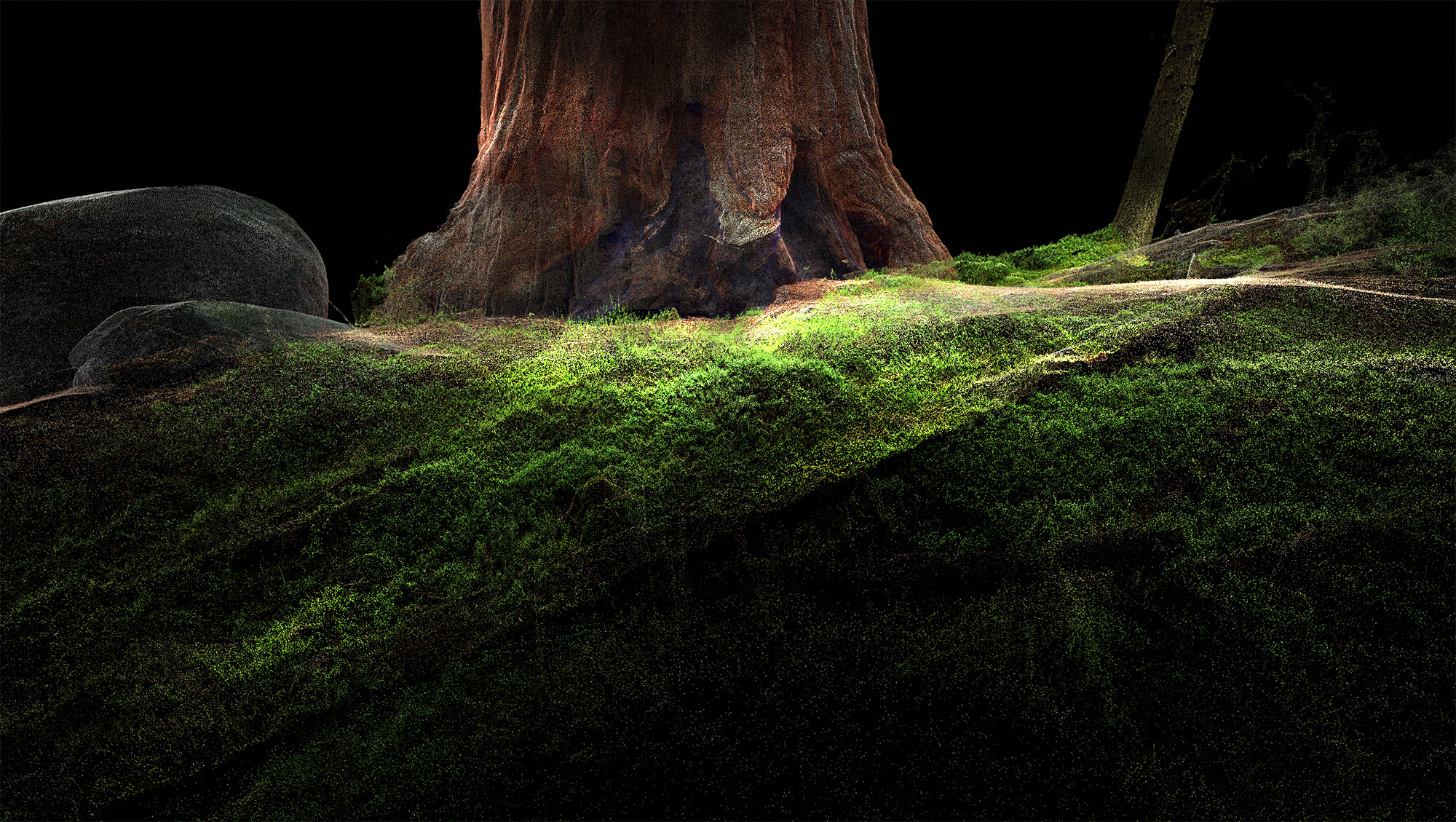
About Marshmallow Laser Feast
Marshmallow Laser Feast creates immersive experiences, attempts to broaden perception, and explores our connection to the natural world. Combining architecture, contemporary imaging techniques and tactile forms, MLF sculpts sleeping spaces until they are enlivened by a playful investigation.
